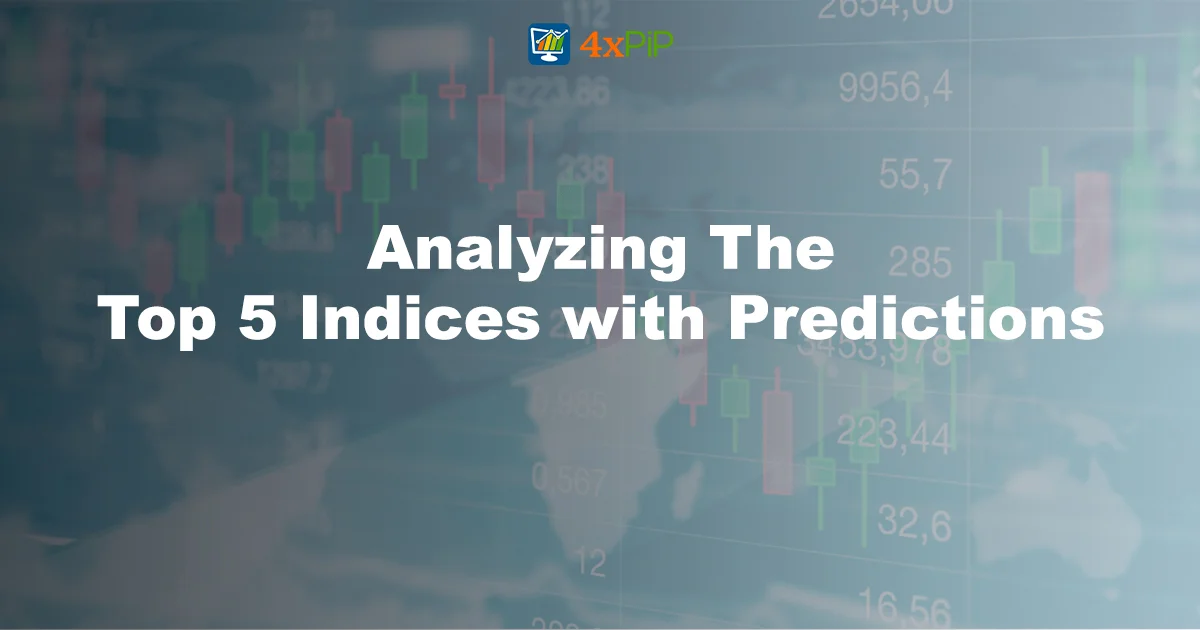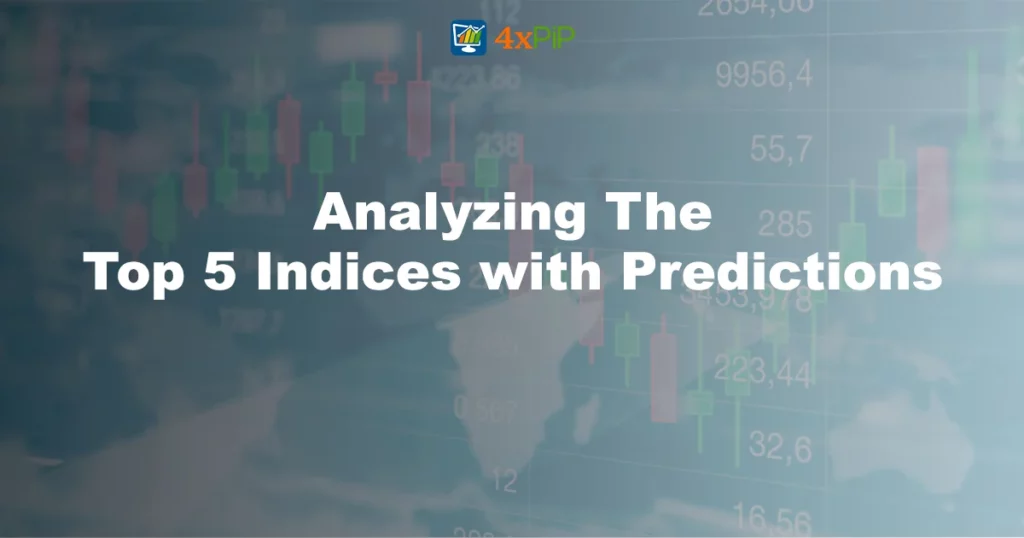In the dynamic realm of financial markets, understanding and predicting the movements of key indices is paramount for investors. This blog explores the current status and future predictions of the top five indices: Dow Jones Industrial Average (DJIA), S&P 500, Nasdaq Composite, Small Cap 2000 (Russell 2000), and S&P 500 VIX. Each index encapsulates a unique facet of the market, presenting opportunities and challenges for savvy investors. Join us as we dissect the data and make informed predictions about the future landscape of these crucial indices.
Before we dive into the details, remember that the information provided here is a snapshot, and market conditions can change rapidly. For personalized guidance and in-depth analysis tailored to your trading strategy, reach out to 4xPip’s experts at [email protected].
Dow Jones Industrial Average (DJIA)
The Dow Jones Industrial Average (DJIA) stands as a barometer of the U.S. stock market, comprising 30 blue-chip companies. As of November 29, 2023, the DJIA closed at 35,390.15, marking a 0.33% increase. This index has exhibited resilience, with a year-to-date growth of **13.3%*. Analysts foresee a continuation of this upward trajectory in the next six months, driven by robust earnings growth, consumer spending, and fiscal stimulus. However, cautionary flags are raised, citing potential challenges from inflation, interest rate hikes, and geopolitical tensions.
S&P 500:
The S&P 500, a benchmark for 500 large-cap U.S. companies, closed at 4,559.34 on November 29, 2023, recording a 0.10% uptick. With a remarkable year-to-date growth of **23.5%*, analysts project a bullish outlook for the next six months. Factors such as solid corporate earnings, economic recovery, and successful vaccine rollout contribute to this optimism. Yet, a note of caution is sounded, warning of potential volatility and correction sparked by concerns over inflation, valuation, and political uncertainties. The S&P 500 stands as a reflection of the broader market sentiment, navigating a path through both opportunities and risks.
Nasdaq Composite:
The Nasdaq Composite, encompassing over 3,000 U.S. and international companies, closed at 14,281.76 on the mentioned date, reflecting a 0.29% gain. Its impressive *18.9% year-to-date growth is attributed to its exposure to high-growth sectors like technology, biotechnology, and e-commerce. Analysts express optimism about its outperformance in the next six months, but challenges lurk in the form of rising interest rates, regulatory scrutiny, and heightened competition. The Nasdaq Composite, a technology-driven index, remains a focal point for those eyeing innovation and growth in the market.
Small Cap 2000 (Russell 2000)
The Small Cap 2000, synonymous with the Russell 2000, closed at 1,797.77 with a significant 1.35% increase. As a market-cap-weighted index of 2,000 small-cap U.S. companies, it has witnessed a *2.9% decline year-to-date. Analysts anticipate a positive trajectory in the next six months, fueled by the reopening of the economy, fiscal stimulus, and lower tax rates. However, concerns linger regarding the impact of inflation, supply chain disruptions, and the ever-evolving landscape of COVID-19 variants on small-cap companies. The Small Cap 2000 represents the dynamism of smaller enterprises in the market, balancing growth potential with inherent risks.
S&P 500 VIX (Volatility Index)
The S&P 500 VIX, known as the fear index, closed at 12.46 on November 29, 2023, reflecting an unchanged status from the previous close. Its year-to-date decline of *46.1% signals market confidence and complacency. Analysts predict a sustained low VIX in the next six months, indicating market stability. However, caution prevails, as unexpected events such as geopolitical conflicts, natural disasters, or market crashes could potentially trigger a spike in the fear index. The S&P 500 VIX serves as a valuable metric for investors assessing market sentiment and risk appetite.
Summary:
In this exploration of the top five indices, we’ve witnessed the diverse dynamics shaping the market. The Dow Jones and S&P 500 showcase resilience and growth potential, while the Nasdaq stands as a beacon for innovation. The Small Cap 2000 reflects the nuances of smaller enterprises, and the S&P 500 VIX serves as a crucial indicator of market sentiment. While opportunities abound, challenges loom, emphasizing the need for a nuanced approach and ongoing market vigilance.












